— The Changing of the Gods of Reason: Cecil John Rhodes, Karoo Fracking, and the Decolonizing of the Anthropocene
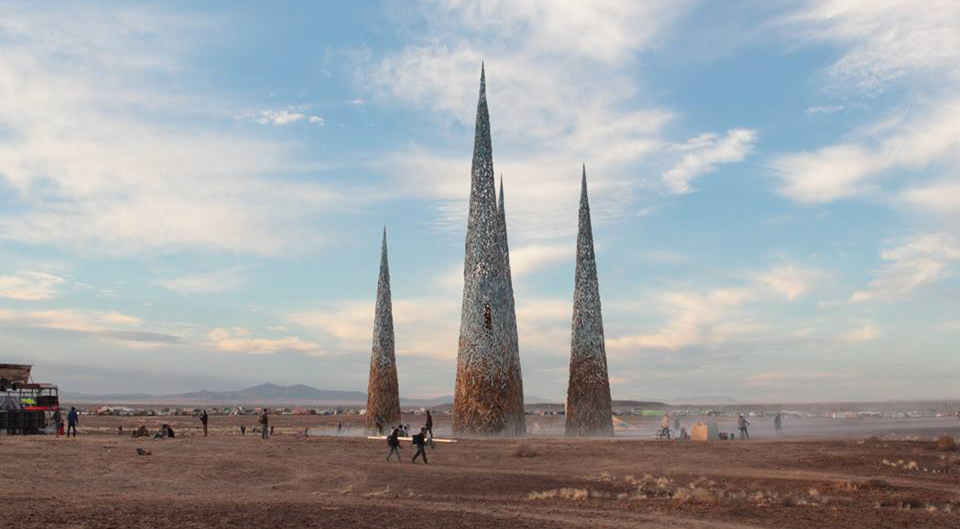
The dry semi-desert that is South Africa’s Karoo began as an ice cap on the supercontinent Pangea, when Euramerica and Gondwana were joined into one large land mass. The Karoo ice cap was kilometers deep and peaked between 359 and 299 million years ago. Planetary temperatures dropped in that period, since the evolution of land plants elsewhere on the planet took up so much CO2 that earth lost its greenhouse roof.1Michael Marshall, “The history of ice on the Earth,” New Scientist, 2010 →
Many paleontologists think it was an early form of termites that ended the Karoo Ice Age. Gorging on the forests that had sprung up elsewhere around the planet, their bellies converted the carbon in wood into methane, a potent carbon-based greenhouse gas.2See “Climate Science of Methane,” Methane UK, Environmental Change Institute, 2009 → The termites produced such vast quantities of methane that the earth warmed.
Over the next hundred million years, glaciers scored the region’s rocks as ice melted and thickened and melted again. Another hundred million years after Pangea split into the two massive continents of Laurasia (Eurasia and North America) and Gondwana (Africa, Antarctica, South America, and Australia), the Karoo became home and then graveyard to dinosaurs of the Jurassic Era and the therapsids that marked the transition from reptiles to mammalians.3“Plate Tectonics,” Wikipedia →; “Pangaea,” Wikipedia →
When the Karoo basin was ruptured by deep subterranean pressures, volcanic extrusions and kimberlite pipes threw skywards the purest form of carbon: diamonds.4National Museum of Bloemfontein → Some of the area’s rivers released diamonds from the rock, and some of these diamonds washed onto the shores of what is now Brazil.
Fast-forward through the next eighty-nine million years of climate change, geological depositions, planetary wobbles, and mass extinction events to about 1.7 million years ago when Homo erectus appeared in Africa during the Pleistocene.5Hillel J. Hoffman, “The Permian Extinction—When Life Nearly Came to an End,” National Geographic →; G. Philip Rightmire, “Homo erectus,” Encyclopedia Britannica →
Slow-forward another 1.58 million years to between 120,000 and eighty thousand years ago, when some of the earliest Homo sapien fossils appeared in the coastal region of South Africa. Skeletal remains dated at ninety thousand years old have been found inland on the South Africa-Swaziland border.6Shula E. Marks, “Southern Africa,” Encyclopedia Britannica → In the complex precolonial period of the area, the San and the Khoekhoe peoples came to dwell in the now-dry Karoo and the neighboring Kalahari Karoo Basin, and over time their neighbors came to be Nama, Tswana, Sotho, Swazi, Zulu, Xhosa, Shona, and others across southern Africa.
Pause at the moment when colonization commenced at the Cape about 350 years ago in the 1650s, during the struggles between the Dutch and the British leading to the British takeover of the southern tip of Africa in the 1790s. The discovery of river diamonds led to an alluvial diamond rush, which local chiefs controlled until early 1870 when they were overwhelmed by incoming settlers.7Robert Turrell, Capital and Labour on the Kimberley Diamond Fields, 1871-1890 (Cambridge: Cambridge University Press, 1987). The discovery of diamond-bearing rock in the northern Karoo in 1869 propelled the Empire into inventing new aspects of the technosphere, in which metal mining structures, wooden beams, steam engines, long guns, and the muscles and bones and guts of migrant laborers were employed to reconnect the volcanic residues of the Late Cretaceous with the economic and political landscapes of South Africa and Britain. At that time, 90 percent of the world’s industrial diamonds on the market came from the region, giving humans who owned machines mastery over geological matter, for diamonds were the hardest known substance on earth. With them, their industrial owners acquired the potential to cut any other material.
Profits from the sale of Late Cretaceous diamonds from ninety-one million years ago fed the formation of cities, corporations, and institutions in England and her Cape. With money from the Rothschilds, the entrepreneur Cecil John Rhodes amassed a personal fortune from the diamond rush, taking control by means fair and foul of claims around the Big Hole of Kimberley, where the largest kimberlite volcanic pipe extrudes. Appointed prime minister of the Cape Colony in 1890, Rhodes set about establishing a legal infrastructure that favored mining and a social infrastructure that established race-based disenfranchisement, creating a class of black laborers who would serve the emerging white-owned mining houses. An ensuing fight over British authority led to two wars between Afrikaners and colonists, sowing the bitter seeds of Afrikaner nationalism and apartheid.
Determined to regain the wealth of the diamond industry, the Afrikaners laid siege to Kimberley in 1899. The British won—with a cannon called Long Cecil that they constructed in the workshops of the diamond mine—and wrested land from the Afrikaners, inventing crimes of war that Hitler would later use against civilians: concentration camps for women and children, and economic plunder. Afrikaner farms were scorched and livestock slaughtered. Black South African land rights were stripped in 1913; black economic activity became largely confined to physical labor, much of which was in the mines.
In the 1900s, the Carboniferous Era from around three hundred million years ago entered South African politics via South African’s coal-fired power stations. In the 1960s, the newly independent Republic of South Africa, under the political leadership of an embittered Afrikaner minority, sought energy autonomy in order to pursue formal policies of race-based segregation, and commissioned geological surveys for coal, oil, and uranium. Coal-fired power stations are still being built in this country, despite being one of the highest per capita carbon emitters in the world.
A little over fifty years later, different molecules in the three-hundred-million-year-old subterra are the subject of parliamentary debates on whether or not to fracture the shale from the Carboniferous. The target is shale gas: a power source at the far end of recoverable petroleates. On these gas molecules, the ruling African National Congress has pinned its hopes for an economic revolution strong enough to stave off rumblings of political revolution, choosing as its allies the oil companies Shell, Chevron, Falcon, and Bundu.
***
Observe here the workings of the planet’s spheres: the cryosphere (ice sphere), whose temperatures are an effect of the carbon-oxygen ratios in the atmosphere, which are an effect of the gas consumption and production of the rhizosphere (roots, rhizomes, and soil life), which depends on the cosmosphere (energy from the sun, the solar system, and wider universe) to sustain the biosphere (plants and their predators, such as the termites and their excreta), which in turn depends on soils generated from the lithosphere (rocks and continents) in relationship with the hydrosphere’s water cycle, which, depending on the relations between all the spheres, may become part of the cryosphere. The expansion of the human technosphere changes this: commodity-based, it requires the extraction of elements from each sphere, and transforms the relations between them. Folding geological time into itself, the technosphere extracts from the sedimented lithosphere the remains of eons-old solar energy, releasing it into the atmosphere. Folding human history into itself, the technosphere extracts from sedimented political arrangements the labor of the bodies of dévaluées: bodies of color, bodies of women, bodies of the dispossessed. A “necropolitics,” to use a term from the philosopher Achille Mbembe: the replacement of reciprocity with commodification between humans, and in human relations with the geospheres.8Achille Mbembe, “Necropolitics,” Public Culture, vol. 15, no.1 (2003). The geological effect of a necropolitical technosphere, on a planetary scale, is the Anthropocene.
The decolonization of the technosphere will never be accomplished solely by carbon-emission negotiations in a calculus of economic justice, as envisioned by the Kyoto Protocol in which South Africa, China, Brazil, and other former colonies have been given more time to pollute in order to catch up. Decolonization requires reimagining the rationales and rationalities that have damaged the earth’s system, and the logics of commodification that continue to render relations of life invisible to the Reasonable Men and Women of Modernity.
***
“Colonization=‘thingification’” wrote the postcolonial philosopher Aimé Césaire.9Aimé Césaire, Discourse on Colonialism (New York: Monthly Review Press, 1972), 42. For Cecil John Rhodes, nature was a spectacle that could be kept in a zoo; the university was a project to be “funded from the stomachs of kafirs”; migrant laborers in the diamond mines were required to wait two weeks before leaving, while the contents of their colons were collected and painstakingly searched for ingested gems.10David Johnson, “'Rhodes said he would build UCT ‘Out of the Kafirs’ stomach,’” Varsity, August 30, 1967;
Anne Harries, “Poo is appropriate choice of ammunition for Cecil Rhodes statue in South Africa,” The Guardian, April 14, 2015 → Under colonial regimes of extraction of labor and minerals, Africa became a laboratory for the necropolitical: relations of life for relationships of ownership and death.11Connor Joseph Cavanagh and David Himmelfarb, “Much in Blood and Money: Necropolitical Ecology on the Margins of the Uganda Protectorate,” Antipode, vol. 47, no. 1 (2014).
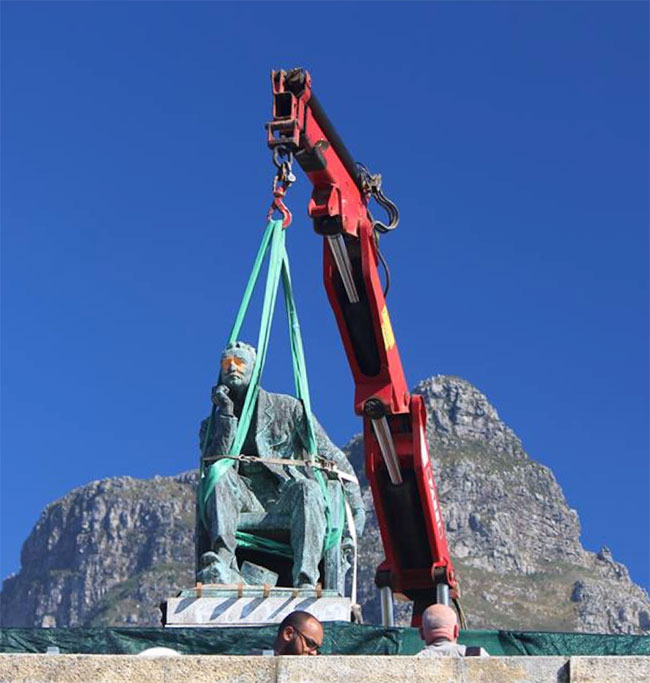
Rhodes’s obituary in the The Guardian noted that “the judgment of history will, we fear, be that he did more than any Englishman of his time to lower the reputation and impair the strength and compromise the future of the Empire.”12Cecil Rhodes obituary, The Guardian, March 27, 1902 → His estate set up the University of Cape Town and his statue was erected in 1934: a two-ton bronze effigy of the man set on a concrete plinth in a pose that calls to mind Rodin’s The Thinker. In the view of the statue’s gaze there was Rhodes Highway, Rhodes Drive, Rhodes High School; to the statue's right was Rhodes Memorial, and to its left his zoo; on the far side of the old Cape Colony would be built Rhodes University. Memorialized thus as the archetypal Reasonable Man, the aura of his realism must have been surreal to those who had suffered under his rule. With a disposition of indisposition and a ruinous political calculus, Rhodes may well have informed the figure of Prospero in A Tempest, the reworking by Césaire of Shakespeare’s The Tempest, in which Prospero is a wealthy merchant-colonist washed up on an island and placed in dialog with his slave-philosopher Ariel and the local Caliban—anagram of Canibal—who refuses the name.13Aimé Césaire, A Tempest, trans. Richard Miller (New York: TCG Translations, 2002).
In an unintended reenactment of Cesaire’s A Tempest in Cape Town in 2015, academics, students, and neoliberals in and alongside the University of Cape Town found themselves confronting a performance of the execrable on March 9, 2015, when student Chumani Maxwele threw excrement—nightsoil from a shack settlement—over Rhodes’s statue to call for the university’s decolonization. Rhodes’s statue was removed on a flat-bed truck exactly one month later, after a process of activism and consultation across the university and with national heritage authorities. His two tons of bronze dangled briefly from a crane, severed from its concrete plinth, then was carted off for safekeeping in an undisclosed location.
The removal of the imperial Reasonable Man also marked the changing of gods and goddesses of reason in the university, where the triumvirate of technical efficiency, economic profitability, and scientific objectivity have long reigned in the cosmos of the knowledge economy.14Bruno Latour, “The Recall of Modernity: Anthropological Approaches,” trans. Stephen Muecke, Cultural Studies Review, vol. 13, no. 1 (2007). Rhodes’s departure compels the question: What difference might it make to our diagnostics and remediations to recognize in modernist thought and colonialism the rationales that have manufactured the Anthropocene, and their continued presence in the university?
Geologies of morals and morals of geology: the Karoo Ice Age, frozen and global, and Rhodes’s Karoo Age, an era of extractive economy that sacrificed life and created sacrifice zones. One lasted a hundred million years, the other a hundred and fifty. Both changed the relations between geology and life. One melted, and in its state of flux, sedimented whole new strata. The other is newly in a state of flux, adding a technosphere to the earth’s great spheres of matter and energy, sedimenting in ice, rock, and ocean floor the effects of its moral philosophy.
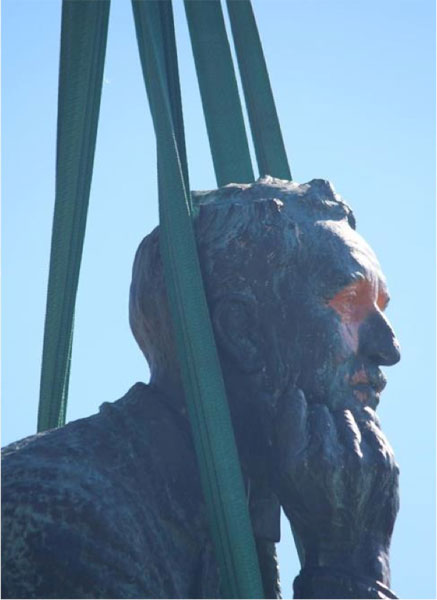
The geological effects of reason—the geologies of rationality—pose the urgent question: Against the flows of a necropolitical geology, how can the sediments of our generation set in place the soils and energy flows in which geocycles can stabilize enough for the work of decolonialism to flourish? The geological morals of Kyoto claim the space of postcolonialism, asserting what is needed to equalize extractive economies. The more fundamental question for the formerly colonized would be to ask: What would it mean to decolonize the necropolitical geologies of the technosphere?
***
The Subterrafuge: in the Karoo, in the proverbial Middle of Nowhere, on a farm next to Tankwa National Park, was a multi-tower installation contra fracking. Its name is a conglomerate of sub: under or below; terra: land or territory; and fuge: expelling or dispelling; and plays on the word “subterfuge”: deceit used in order to achieve one’s goal.15Created by artists Nathan Honey and Isa Marques in the Karoo in 2014, the Subterrafuge constellated a range of contra-fracking arguments as part of the AfrikaBurn event of 2014 → Connecting earth and sky, living and dead, the permanence of industrial infrastructure and the temporality of fire, Subterrafuge references the tall infrastructural installations that will be required to turn this part of the Karoo into an extractive economy, as well as the small-town church spires and the cedars planted in old graveyards across the Karoo. Built as part of the AfrikaBurn festival in 2014 and burned in a 2015 event, the Subterrafuge installation was a mixed-media, wood-and-word comment on the logic of shale gas, justified by subterfuge, in which gas, water, rock, earth, and air are commodities extracted for the purpose of economic growth measured in capital, which is assumed to “trickle down” through layers of stratified humans.16AfrikaBurn, modelled on the Burning Man festival in Nevada, attempts to offer participants the experience of a gift economy for a week. Not without its own struggles over capital, commodity, and race, AfrikaBurn is an important site in which to read emergent forms of environmentalism in South Africa Such subterfuges continue to divide the necropolitical from an ecology of life across all spheres, including the university, whether in macroeconomics or mining engineering.17Latour, “The Recall of Modernity.”
And indeed, the engineering consultants who currently advise on such extraction in South Africa are the moral geologists of contemporary South Africa, possessed of the belief that the cement they propose to line and plug the thousands upon thousands of fracking wells and waste-water sites will be able, perpetually and up to a depth of five kilometers, to withstand the flows of gas and liquids, the movement of tectonic plates, and the forces of contending reason.
Cement is a magical substance in the cosmology of modernity, through which engineering has come up with ways of keeping fracking water (or nuclear waste) out of hydrological cycles and tectonic processes, which is left to states to simply “regulate.” Perhaps the artifact of modernity, the conceptualization of the role of cement in hydraulic fracturing exemplifies the modernist confusion of states of matter with matters of the state. The idea that cement can perpetually keep apart the geospheres throws into comic relief the claim that the modern state’s regulatory framework is an adequate framework for extraction. It would not be an exoticization to say: look at fracking landscapes and observe how cement is believed, by those followers of the gods of industry, to offer an immunity to geological time, and to the physics of flows, and to the forces of human history.
Such an irrational belief in the power of cement confers upon modern-minded humans the power to enact upon the earth the transformation of liquid to solid; the division between economics and ecology; the separation of human activity from ecological and planetary systems. Outside of space and time, cement is assumed to be immune to tectonics, and impervious to osmosis. It is this belief that allows the illusion that exploding and loading 750 chemicals in the subterra—including heavy metals, carcinogens, endocrine disruptors, neurotoxins, and respiratory distressors—will confine them to a particular space, on a specific property, and in a legal territory, even though the planet’s history is that of flows between states of matter, and modern history is that of warfare on enemies in all of their spheres: techno-, atmo-, hydro-, bio-, litho. In cement, the geophilosophy of human exceptionalism is cemented: the self-image of moderns is thus denatured, dematerialized, and separated from the planet itself.
The earth made in the image of modernist thought is a world made of Platonic and Archimedean solids, unlike in the thought of the ancient Chinese, for whom the geometry of the world was understood in flows and propensities, and unlike that of Amerindian thought, in which the world was not abstract space but made by movements of interacting bodies, and unlike that of surviving fragments of southern African thought, in which household farming recognizes in the relationship of water, soil, and plants a relation akin to that of sex, birth, and death.17 Francois Jullien, The Propensity of Things (Cambridge, MA: Zone Books, 1999). See Lesley and David Green, Knowing the Day, Knowing the World (Tucson: Arizona University Press, 2014); Christopher Mabeza, The Marriage of Water and Soil: Adaptation to climate by a smallholder farmer in Zvishavane, Zimbabwe, PhD dissertation, School of African and Gender Studies, Anthropology and Linguistics, University of Cape Town (2015). Birth springs from the marriage of water and soil; in death, the soil bears the mutuality of the living and the dead and the unborn, across all species. How much more useful would ontologies like these be in finding, forming, and living a geo-story that can guide the decisions we make in the technosphere, in ways that give life beyond the Anthropocene?
The making of Subterrafuge and the unmaking of Rhodes’s statue at the University of Cape Town share a critique of cemented ideas, and a critique of the cementing of extractive industries in the South African landscape.
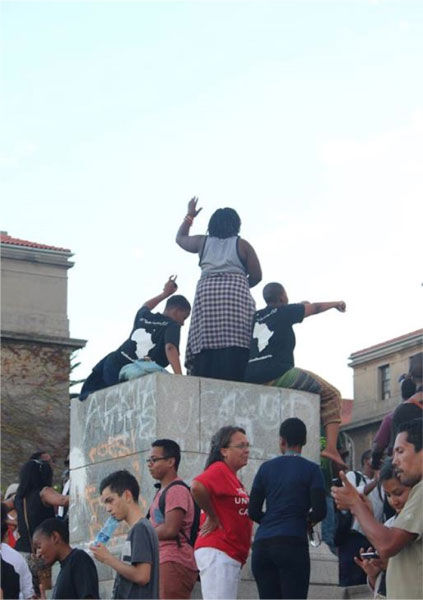
Amid the Rhodes statue’s formal removal on April 9, 2015, a construction worker—a deconstruction worker, really—took a moment to piss and loudly announce he was doing so on the stairs leading up to Rhodes. It was his own moment in a month-long protest beginning with the shit-throwing. A moment to seize the possibility of vulgarity that breaks the lines of authority, the fountain of piss flagrantly rejoins the flow of water through all bodies and all spheres. The freedom to piss on the cement of Empire asserts that the body of the construction worker and the body of the shack-dweller inhabit the same earth as the Empire, and that cement, ultimately, is a political subject. As is diamond-bearing kimberlite, and gas-bearing shale.
***
About fifteen minutes after the truck left the University of Cape Town campus bearing Rhodes’s effigy, three young black women stood up on the statue’s plinth.
They were not the goddess sisters of reason in the knowledge economy—though they might become them, depending on what influence this generation of brave, angry students has on shaping the rationale for knowledge production in South Africa. Will it be the buen vivir, the good life outside of the growth economy, as articulated in Latin American decolonial thought, or will it reflect the spirit of representative consumption that possesses South African political leadership? Many fear that the genie of the génocidaire may emerge from this plinth to make her candidacy available, as new groups emerge elsewhere in South Africa to topple statues that others see as sacred enough to bind themselves into them with chains. Amid the Twitter-trending fears of societal apocalypse, the three women embodied, that day, the cry from across the decolonial world: Another World Is Possible.
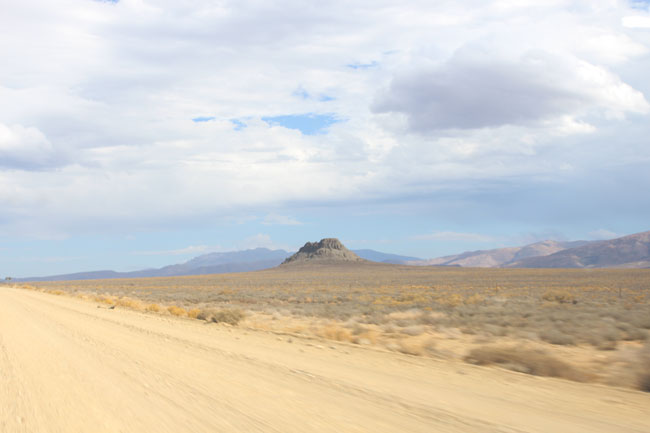
These are risky times indeed, without known gods of reason. The possibility of exploring modes of reality and reason was opened up by a tiny crack on April 9, 2015, in ways that were unimaginable a month before. Colonization made predatory claims on the earth’s geological flows and processes without regard to the reciprocities through which they were formed in the earth’s spheres. The technosphere is here to stay: its moral geologies are what we need to reimagine. In the Anthropocene, it is the gods and goddesses of reason in the technosphere who will yield the geocycles to come, and they alone will determine who and what is relinked or delinked among the earth’s spheres. Whether the incoming gods and goddesses of reason can transform the relations that have made the Anthropocene—where reciprocities and gifts have been replaced by commodities set in a relation of violence—depends on the decolonization of knowledge itself.
×
Grateful thanks to Eduardo Viveiros de Castro for a discussion on cement and modernity; to many participants in the Thousand Names of Gaia meeting in Rio, September 2014; for conversations about modernity and geology; and to Pedro Neves Marques and Isabelle Stengers for comments on earlier versions. I am indebted to the Rhodes Must Fall students at UCT, who have been courageous enough to move the rock on which the South African College, and the University of Cape Town, was built.


